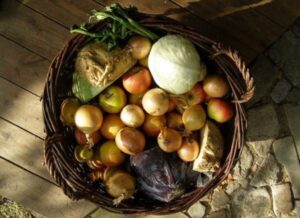Get Ready to Plant A Sustainable and Seasonal Fall Garden

Although it may be sweltering hot and your veggie garden is probably pumping out a bevy of deliciousness, it’s time to start planning and planting your fall garden. Extend your harvest season and enjoy the benefits of homegrown vegetables and herbs. Not only is it tastier, more sustainable, and financially viable to grow your own food, the pride of growing your own just doesn’t compare to any supermarket anywhere. So strip out your spent beds and overgrown lettuces and brassicas and tuck in some seeds for hardy greens, root veggies, peas and herbs.
Planting Times
The planting window for fall and winter harvests falls between mid-July and September, depending on the approximate date of the first freeze for your area. You can check the approximate planting dates for your areas from this list of calendars for US states to find the most suitable one for your region. You’ll also want to decide on the best plants for your fall garden, ranging from leafy greens to alliums and delicious salad and sauce herbs.
Seeds and Seedlings
Once you’ve decided what you want to plant, you’ll need to invest in some seeds or plant starts. Seeds will start well on a sunny windowsill or protected area (such as a polytunnel or cold frame) of the garden, while starts will be easier to deal with. If you start your seeds indoors, make sure to harden them off outside for about a week before planting them in the ground.
Planting Site
Prepare your fall beds in areas where other plants have already done their thing, such as where overgrown lettuces and spinach, withered-out peas, or ready to harvest root vegetables have dwelled. Remember to keep your crop rotation methods in mind, so plant your greens where you had you root vegetables or peas, your root vegetables in beds where you had greens, and peas in beds that housed root veggies or brassicas. Lettuces turn bitter in the heat, so plant them in shady spots or later in the season if it hot weather is projected to continue for several weeks in your area.
Pots also work well for smaller spaces or ones that may require plants to be moved into shelter on freezing nights. Lettuces, arugula and herbs like cilantro and dill do well in pots during the fall and winter months.
Amendments
You can add a layer of organic gardening compost to the beds before planting, making sure to use finely sifted soil on top of seeds. This will help enrich and loosen the soil alongside supporting the beneficial soil bacteria and fungi in your earth. Work the soil with a hand fork a bit before planting if it is clumpy, and add sand if the soil is high in clay. Feel free to plant pest control flowers like calendulas, marigolds and cosmos to add some useful color to your fall garden!
Image: erix!

